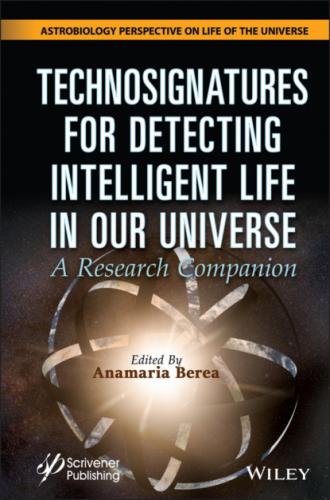As our science and scientific understanding and instruments advance, so do our definitions and framing or reframing of the same problem. The way we understand life and intelligence today, as well as potential life and intelligence, will co-evolve with our new discoveries, both here, on our planet, and in the Universe. And research companions like this one help with the current state of the field, but will also have to be updated and changed in time.
The first chapter, “Historical Perspectives - How the Search for Technosignatures Grew Out of the Cold War”, takes us into the detailed history of the field, the origins of SETI and the importance of placing this field in historical context. The second chapter, “Reading the Cosmos: What Our Science Tells Us about the Science of Another World”, highlights the importance of scientific process and evolution of science per se for an advanced civilization that can develop technologies and can communicate at interstellar distances, as well as how perceptions of space and time might affect communication with possible intelligent alien life. The third chapter, “The Impact of Discovering the First Technosignature”, delves into the social and societal impact of such a big discovery and how we can prepare here on Earth for disseminating such information to the public at large. The fourth chapter, “Searching for Extraterrestrial Intelligence by Locating Potential ET Communication Networks in Space”, outlines in more depth the possibility of communication networks from alien life, which would imply planetary and habitability networks, as well as more advanced and sophisticated means of communication. The fifth chapter, “Habitable Mini-Earths with Black Hole Cores”, proposes a new model of habitability for smaller planets, such as mini-Earths, that would have a black hole at their core. The sixth chapter, “Technosignatures in Time-Series Photometry”, proposes a new method for detecting technosignatures, based on the analysis of timeseries data in the light curves of photometry of exoplanets. The seventh chapter, “Post-Detection Message Analysis and Comprehension”, looks at the efforts that would be needed for the analysis, comprehension and possibly reply after such an alien message would be detected, from the point of view of information science and patterns. The eighth chapter, “Statistical Issues in the
This collection of essays therefore represents an updated reference material for the field of technosignatures, and includes novel ideas from economics, information theory, astrophysics, statistics, social sciences, planetary sciences, and more. It is a research compendium for scientists from any interdisciplinary field who would want to get involved in this exciting area of work, and it is accessible not only to scientists but to the public at large as well.
Although not extensive, this book summarizes the multiple interdisciplinary efforts that have contributed to the field of technosignatures, particularly within the past few years. It shows how current advances in science, technology, and social sciences can support this effort and can be used as both a resource for the scientists in the field and as a reference for the public interested in the topic.
Anamaria Berea [email protected] or [email protected] April 2022
Конец ознакомительного фрагмента.
Текст предоставлен ООО «ЛитРес».
Прочитайте эту книгу целиком, купив полную легальную версию на ЛитРес.
Безопасно оплатить книгу можно банковской картой Visa, MasterCard, Maestro, со счета мобильного телефона, с платежного терминала, в салоне МТС или Связной, через PayPal, WebMoney, Яндекс.Деньги, QIWI Кошелек, бонусными картами или другим удобным Вам способом.
